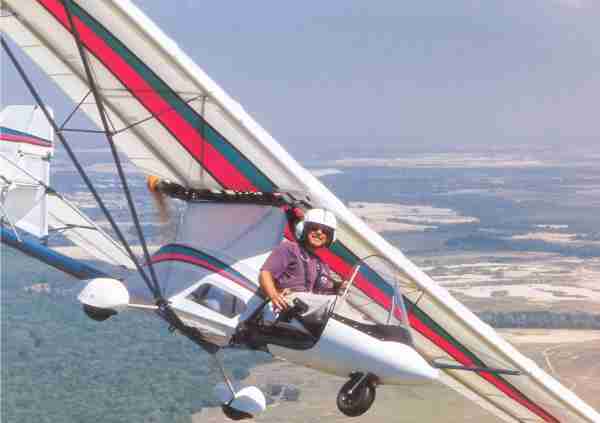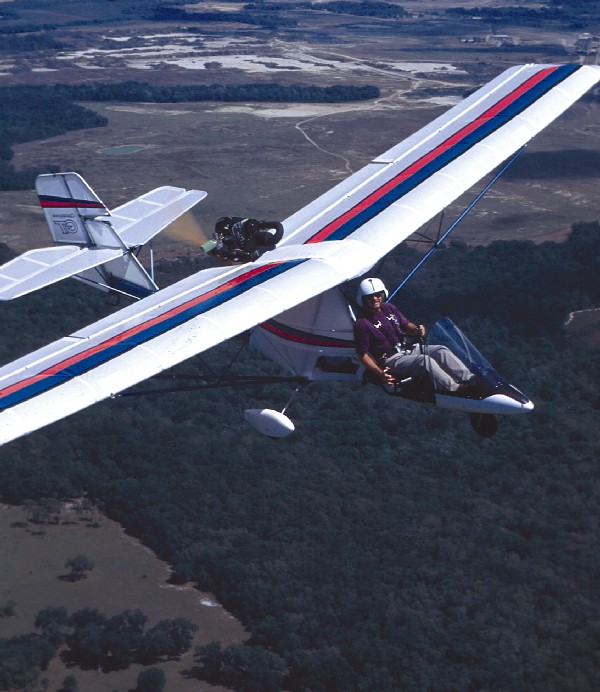
One of the best regarded light aircraft on the market is the GT400 from newly reorganized and revitalized Quicksilver. The longtime manufacturer of ultralights has new ownership and good things are happening. Fortunately, the Southern California leader stuck with their successful models. According to many who have flown it, the GT400 is one of the best flying single seat aircraft you can buy. To beginners, it is predictable and stable with qualities that allow a new pilot to progress with confidence. To old timers, the GT400 has such refined characteristics that it can please those with many hours logged. Using a control yoke rather than a joystick, GT400 emulates certified aircraft yet for all its sophistication, the design does not lose any of the fun side that makes ultralights so enjoyable. Handling is smooth but responsive. Performance is substantial but not scary. And its stability profile sets a standard for light aircraft.












